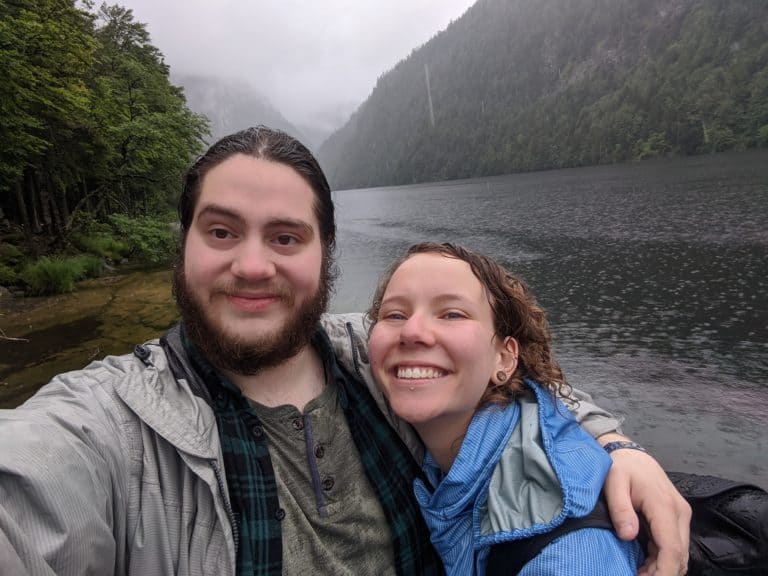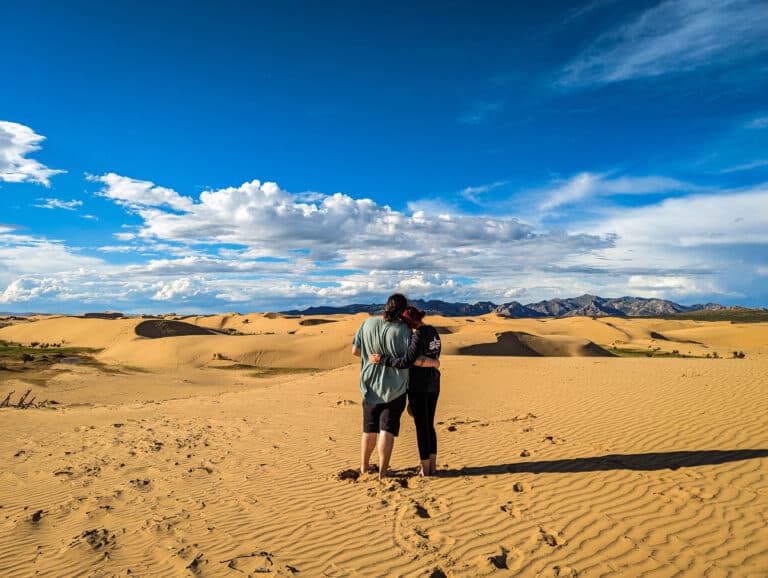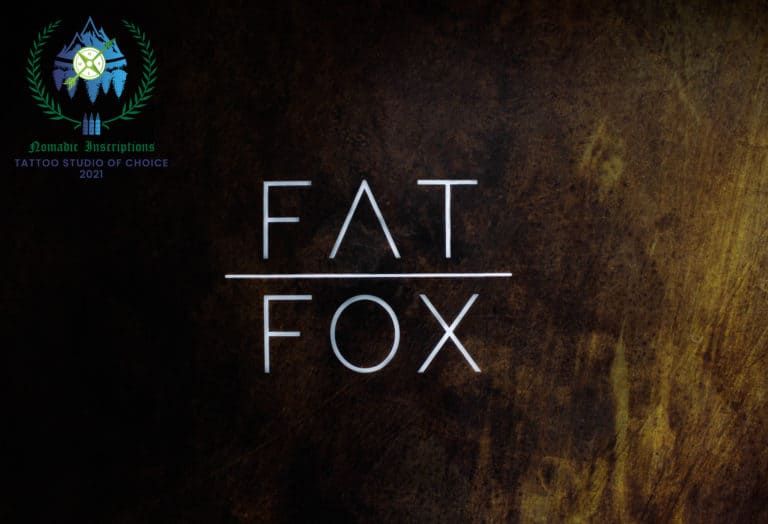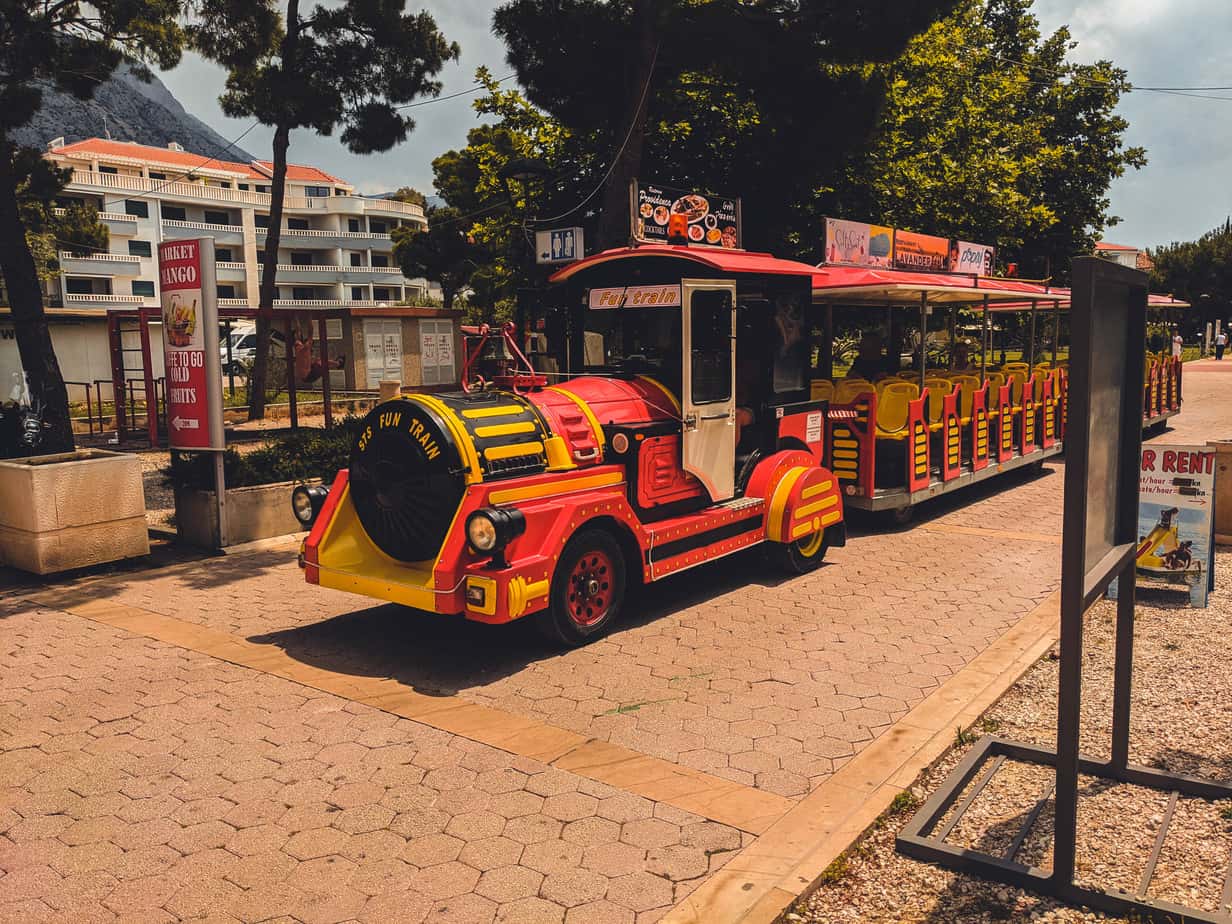Contents of Post
Tattooing is an art form that goes back centuries. The earliest evidence of tattooing comes in the form of little clay figures that are painted or engraved to symbolize tattoos. The oldest of these figurines date back to 5000 B.C. after being recovered from ancient tombs in Japan. The oldest tattooed body was discovered in the Ötztal Alps and was dated back around 5200 years ago. These just go to show that traditional tattooing methods are deeply inscribed into our history.
Sak Yant

The Sak Yant, or Yantra tattoo, is a traditional tattooing method from Southeast Asia. Primarily Thailand. It is the form of traditional tattooing that has gained the most popularity and renown worldwide. Every year hundreds, if not thousands, of people go to Thailand with the goal of getting one of these tattoos.
The Sak Yant has a very cool delivery method. The artist is a monk in a temple who picks what tattoo to give you. With the tattoo comes a list of tenants to live by that differs by design. He tattoos you in the temple while other monks chant nearby. An incredibly cool experience that leaves little surprise as to why people flock in the hundreds to get one.
Skin Stitching
Skin Stitching is by far one of the traditional tattooing methods that I am most excited to get myself. It’s so uniquely terrifying that I just have to do it. Skin stitching is a method of tattooing done by the Native tribes of North America Where they take a needle and thread, dip the thread in a water and soot mixture, then stitch the tattoo into your skin.
Tebori

Tebori is a traditional tattooing method that comes out of Japan. A method almost lost to the ages before more and more tattoo artists throughout Japan decided to bring it back. Tebori is most closely resembling the bamboo method throughout Asia. Where a group of needles is attached to the tip of a piece of metal or wood and repetitively poked into the skin.
Kalinga
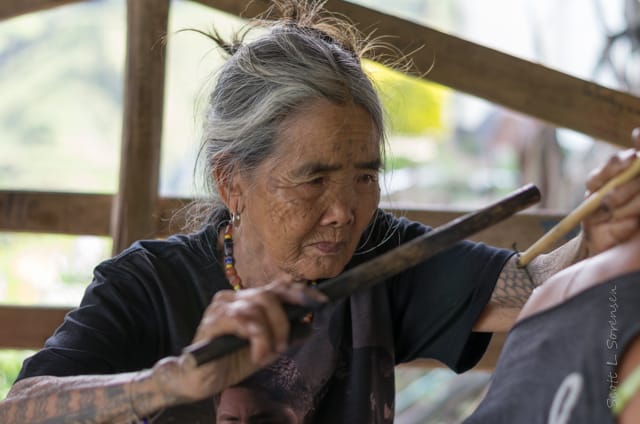
Kalinga is a unique traditional tattooing method from the Philippines that has all but disappeared. The Kalinga tattooing method consists of charcoal or soot mixed with water as ink and a long lemon tree thorn attached to bamboo as a needle.
For the longest time, a lady named Whang-od Oggay, located in a remote village in the Cordillera mountains, was the only person left alive making tattoos in this traditional method. After having done this for over eight decades she became world-renowned for her tattooing. After decades of being the sole keeper of the Kalinga tattoo, she has since started passing it down to younger women in her region.
Stick and Poke
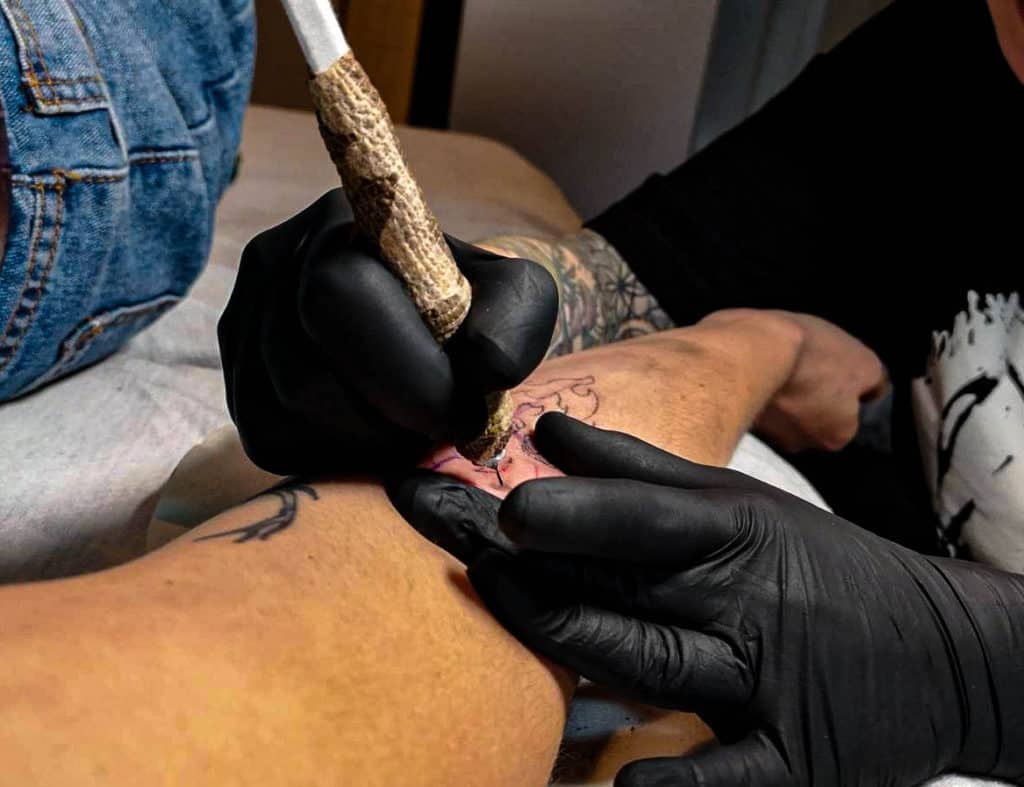
By now everyone has heard of the stick and poke. You take a needle and some ink to stab the ink into the skin. Although a traditional tattooing method from various places around the world, such as Croatia, it’s been brought into modern society by many a person.
When I was growing up teens would do it to appear cooler or to bypass the age restrictions on getting tattoos. More often though they would be referred to as “Prison Tats” due to their very poorly done appearance and the fact that it happened a lot in prisons.
Recently though the stick and poke have been brought back to life by many a tattoo artist. Some such artists have perfected this art form to such an extent as to have their tattoos rival ones made by professionals using a tattoo gun.
Bamboo
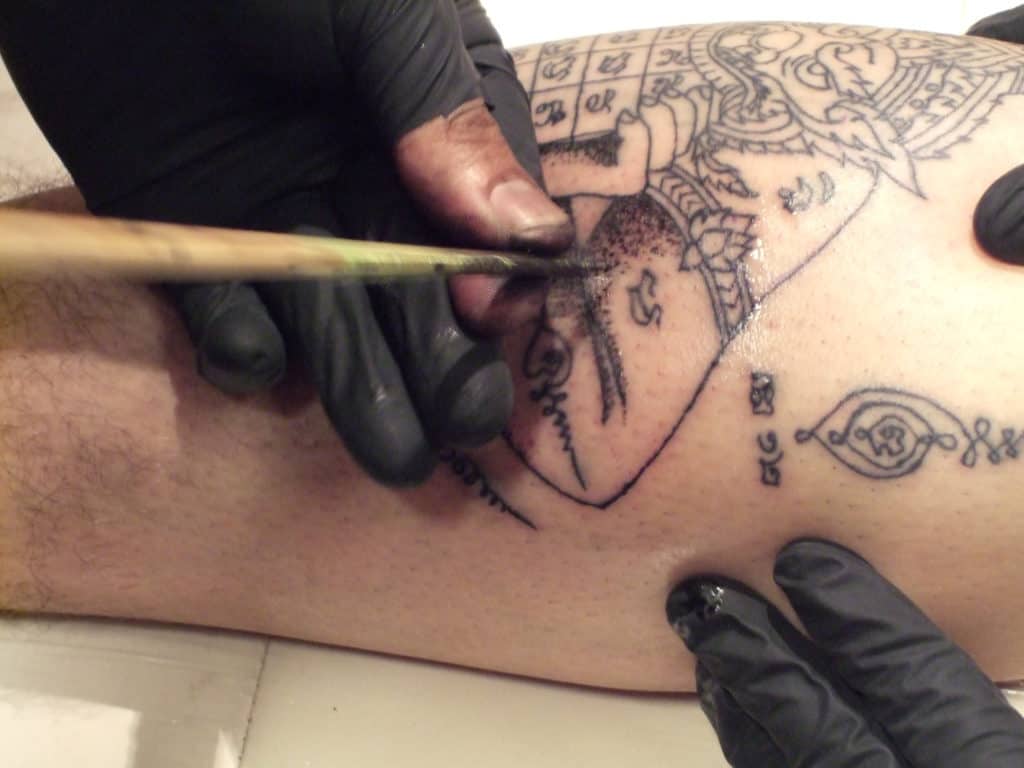
Tattooing with bamboo is a traditional tattooing method that can be found all over Asia. Although fewer people go for it than people travelling to get the Sak Yant it is still one of the most popular traditional tattooing methods to travel for.
Tattooing with bamboo is done by taking very fine needles made of either wood or metal, putting them on the end of a thin stick of bamboo, and using the stick and poke method. The needles are not usually made out of bamboo themselves ironically enough.
Bone Tapping (Samoa, Fiji, New Zealand and many others)

Bone tapping, which is heavily attributed to the Samoans, is a very ancient traditional tattooing method that is responsible for the Polynesian style of tribal tattoos. It’s these regions that the word tattoo actually derives from as the word “Tatau” which is in the many languages of the Polynesian island meaning “to strike”.
Bone tapping is done by carving bone into needles, or rows of needles, attaching them to a stick at a 90-degree angle and being tapped into the skin using another stick.
Rake and Strike
Rake and strike are quite similar to bone tapping. Though instead of using bone another type of needle is attached to the stick. However, where bone tapping is usually a medium to large row of needles rake and strike is usually a single needle or a small grouping.
Scarification
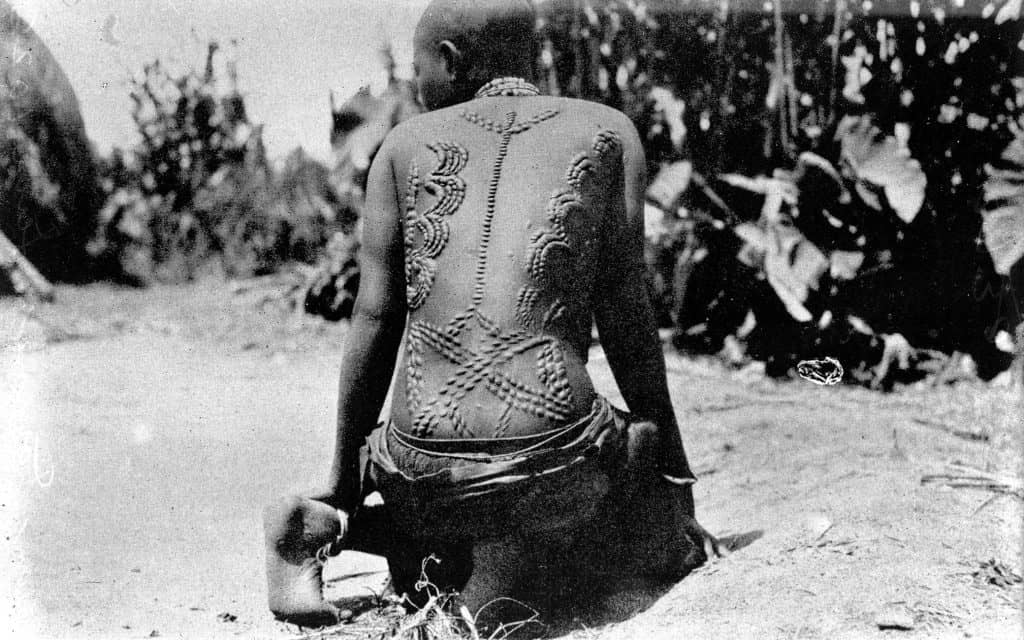
This traditional tattooing method is by far the most painful, dangerous, and one of the most unique. It was done all over the world, but can be found most prominently in the tribes of Africa. It has huge cultural significance beyond personal identification as it can do with standing, different stages of life, and so many other things.
Scarification is done by taking metal, sharp stone, or glass and carving out designs in the skin, sometimes even taking out large chunks to create raised scars. It’s quite possibly the most ancient traditional tattooing method out there.
Ink Rubbing
Ink rubbing is a derivative of scarification. Where scarification uses deep cuts for a myriad of societal and identification reasons, ink rubbing was more often used for art and expression. Its history also doesn’t go as far back as scarification does.
Essentially ink rubbing is done by cutting a design or picture out of the skin, taking ink a shit ton of ink and rubbing it deep into the open wound. An incredibly painful process that surpasses even scarification.
Henna

Henna is quite unique, even among this list. The reason for this is that Henna tattooing is not permanent. This made me skeptical about putting it on this list. Yet as a form of skin art that can be traced all the way back to the ancient Egyptians, Henna secures its spot on this list as a very traditional tattooing method.
Henna is done by taking dried leaves from the henna tree, crushing them up, then mixing them with essential oils and water. The artists have little tools that they use to draw intricate designs on the skin that turns into a beautiful olivey brown colour as it dries. Henna typically lasts two weeks before it fades. When fading occurs it’s recommended to quickly take it off.
Honourary Mention: Western Tattooing
Western tattooing is not as traditional as the rest. Therefore not quite making the list of unique traditional tattooing methods as it is the method used to this day. It can be traced back to the late 1800s with the invention of the tattoo gun. Making western tattooing arguably the most recent method of tattooing and therefore not traditional.
In Conclusion:
With there being many unique traditional methods of tattooing from all over the world you can see that a lot of regions came to very similar methods. Even when those areas aren’t near each other. Tattooing is inscribed throughout human history and who knows how much of it has been lost to the ages due to bad stigmatisms around it. Luckily these 11 unique traditional tattooing methods are still around today. Available for us to experience if we so choose. I hope you won’t let these methods disappear into history like so many others probably have. If you do choose to get one make sure to use proper aftercare.
Although some of these methods are very similar, if not the same, there is still one very major difference. That difference really comes down to the art forms the cultures that use those methods choose to inscribe. Those traditional tattoo styles speak wonders to their differences.
Is there anything you think we missed or got wrong? We don’t know everything so let us know in the comments below!
Until next time travel authentically, travel nomadically, and let this world inscribe itself upon you as you do on it.

